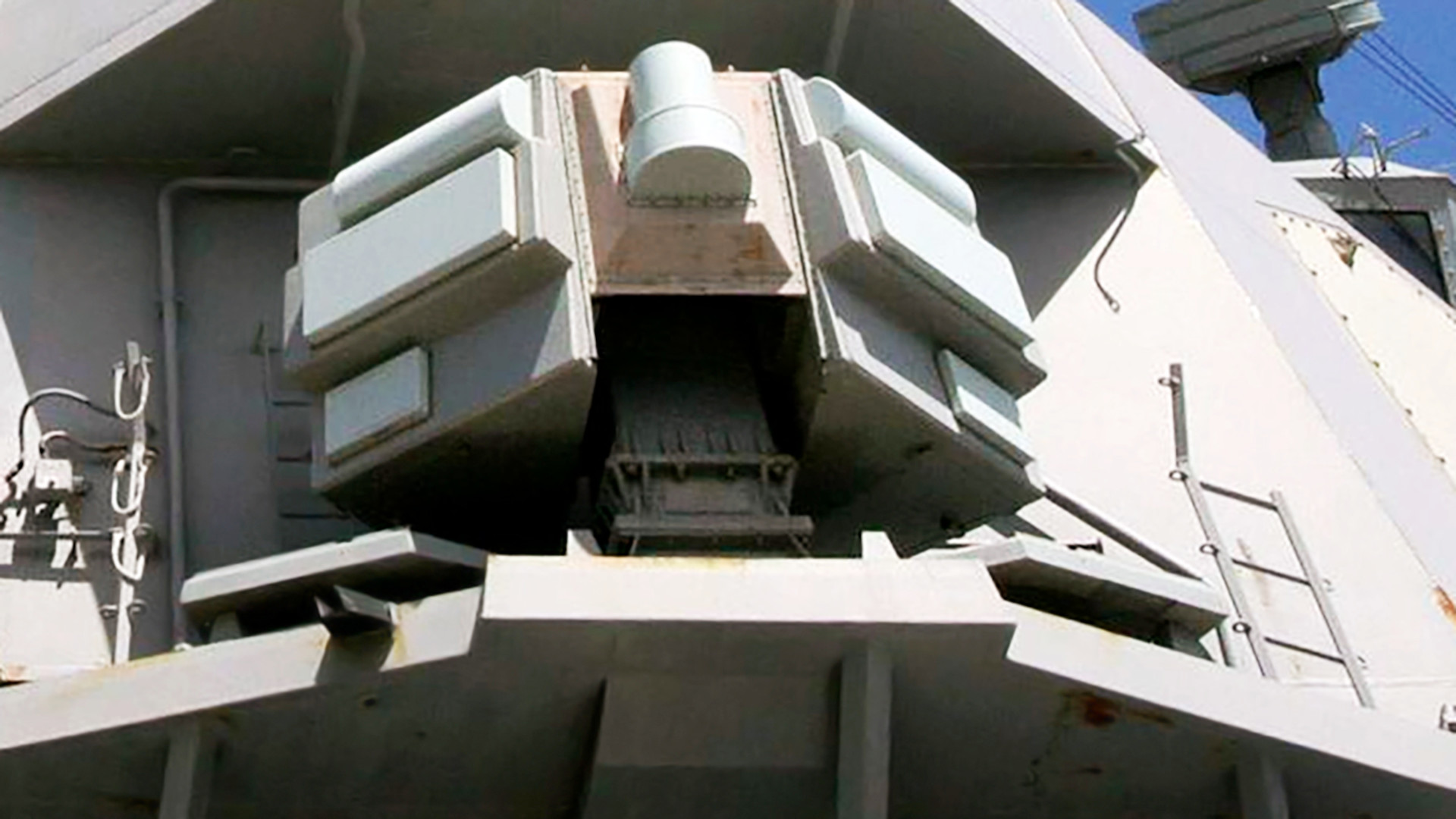The U.S. Navy is pushing to get new add-on advanced electronic attack systems onto a variety of ships as quickly as it can. The Scaled Onboard Electronic Attack (SOEA) system is specifically intended to provide a way to get this capability onto vessels that cannot be fitted with the service’s new AN/SLQ-32(V)7 Surface Electronic Warfare Improvement Program Block III (SEWIP Block III) suite. Giving more ships with the ability to launch electronic attacks could be especially useful in helping to defend them against incoming missiles and drones.
Navy Captain Jesse Mink highlighted the importance of the SOEA program to The War Zone and other attendees at the Navy League’s annual Sea Air Space conference earlier this week. Mink is the current Program Manager for Above Water Sensors within Naval Sea Systems Command’s Program Executive Office for Integrated Warfare Systems (PEO IWS).
“Not every ship has the SWaP-C, or the size, weight, power, and cooling to handle the full SLQ-32(V)7 install. However, the future fight shows that ships are much more survivable with some onboard electronic attack capability,” Mink said. “Therefore, there’s a … program called Scaled Onboard EA, or SOEA … and we’re starting in earnest to get after that capability and get that to the fleet as soon as possible.”

Mink described SOEA as a “new start” for the 2024 Fiscal Year, which began on October 1 of last year, though the Navy has been exploring scaling down the SEWIP Block III system since at least 2022. The service has also fielded other discreet add-on electronic warfare systems that have specific electronic attack capabilities in the recent past, but these are likely focused on specific threats.
Actual work on the SOEA program is only really starting now due to difficulties in Congress in passing a full budget for the current fiscal cycle, something that was only resolved last month. The Navy’s Fiscal Year 2025 budget request says that the current expectation now is that the “procurement of SOEA Phase 1 units will begin upon completion of development efforts in FY26.”
The ability to actively conduct precise and potent electronic attacks on multiple targets simultaneously is one of the key improvements found in the SEWIP Block III system when compared to older SEWIP systems. Previous iterations of this suite had increasingly advanced, but still passive electronic detection capabilities. Though still extremely valuable, previous SEWIP suites are primarily used to help detect, identify, and track potential threats, not engage them directly. Additional jamming and EW capabilities that work in conjunction with AN/SLQ-32 systems have been added on and taken off ships throughout the years, but they aren’t near the capability level and flexibility that the SEWIP III suite offers. SEWIP Block III’s use of active electronically scanned array (AESA) antennas offers significant advantages over other electronic attack capabilities the Navy has fielded aboard ships in the past.

“With an AESA, one of its key advantages is you can dynamically adjust and focus your RF energy and so instead of some of the legacy systems that have been fielded for EW they use very broad beams and just broadly place a beam in a very broad space of from where the ship is. It [the AESA] allows you to create a very tight beam,” Mike Meaney, then Northrop Grumman’s Vice President in charge of the SEWIP Block III program, told The War Zone in an interview in 2021. “Since we can move and steer beams at computer speed at literally very small portions of seconds, we can put multiple beams out simultaneously and we can hit multiple things at the same time. So we can jam multiple threats simultaneously, we can dynamically scan them [the beams] and move them around quickly and do multiple functions simultaneously, as needed.”
SEWIP Block III with its AESA arrays has a variety of additional capabilities beyond just electronic warfare, too, including being able to act as a communications system and even offering radar-like functionality. You can learn more about the system and what it can do in the full interview with Meaney here.
The immediate issue is, as Captain Jesse Mink noted at this year’s Sea Air Space Conference, that SEWIP Block III is physically huge and extremely resource-intensive. To date, one ship, the Arleigh Burke class destroyer USS Pinckney, has been fitted with the system, and its outward appearance has completely changed as a result. SEWIP Block III is currently slated to go on four Burkes as part of a modernization effort called DDG 2.0, which Navy officials also provided an update on at Sea Air Space this week. The Navy budget documents indicate that a version of SEWIP Block III is also slated to be fitted to at least some Nimitz and Ford class aircraft carriers and Wasp and America class amphibious assault ships.
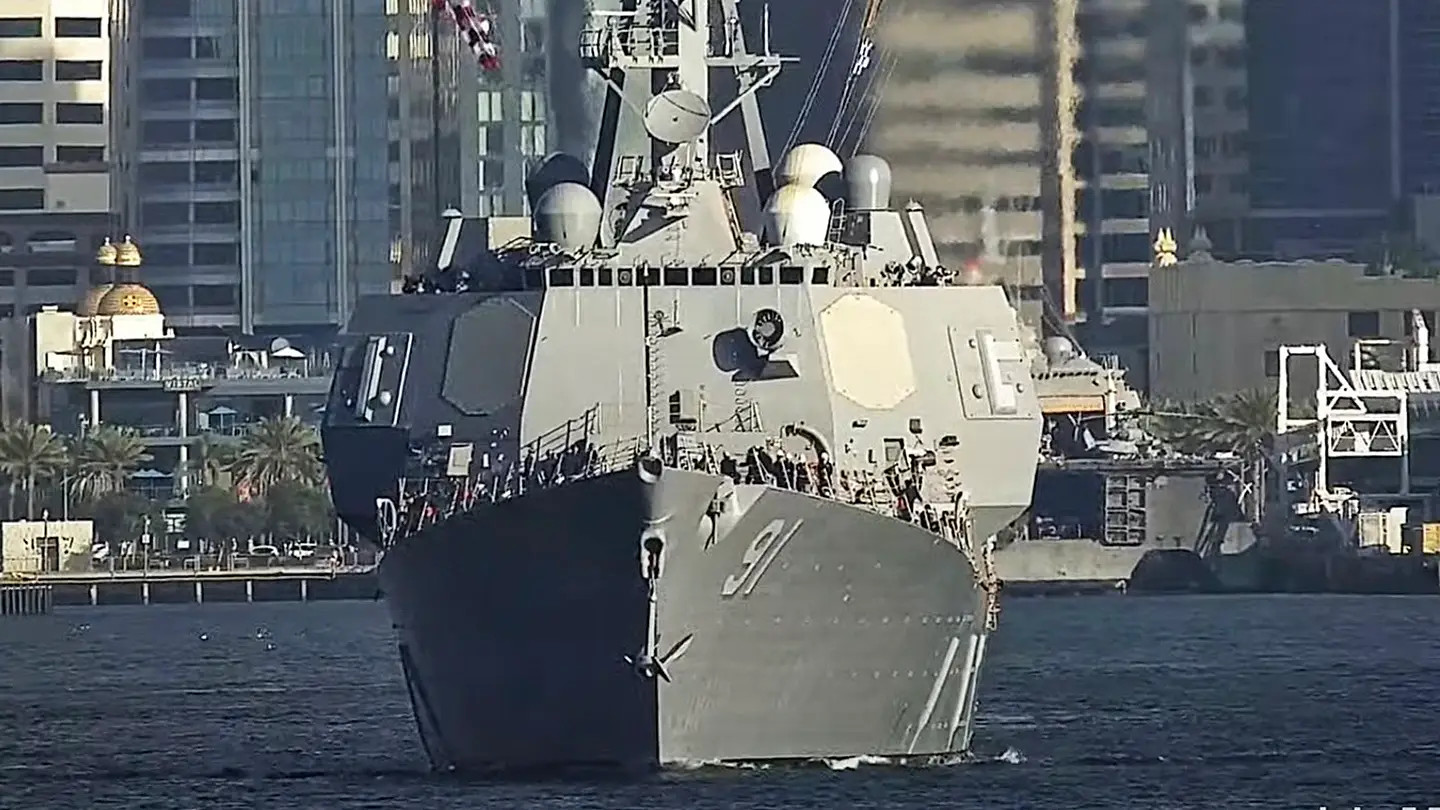
The preceding SEWIP Block II system was itself too onerous for the Navy’s Littoral Combat Ships. This led to the development of a “Lite” version with somewhat reduced capabilities designated the AN/SLQ-32C(V)6 for Independence class LCSs. Freedom class LCSs have a different electronic support measures suite.
SOEA will similarly have more limited capabilities than what is found on the full AN/SLQ-32(V)7 suite, though exactly how limited is unknown. The scaled-down system could leverage advances in smaller form factor AESAs to help reduce its size and resource demands while still retaining significant capability.
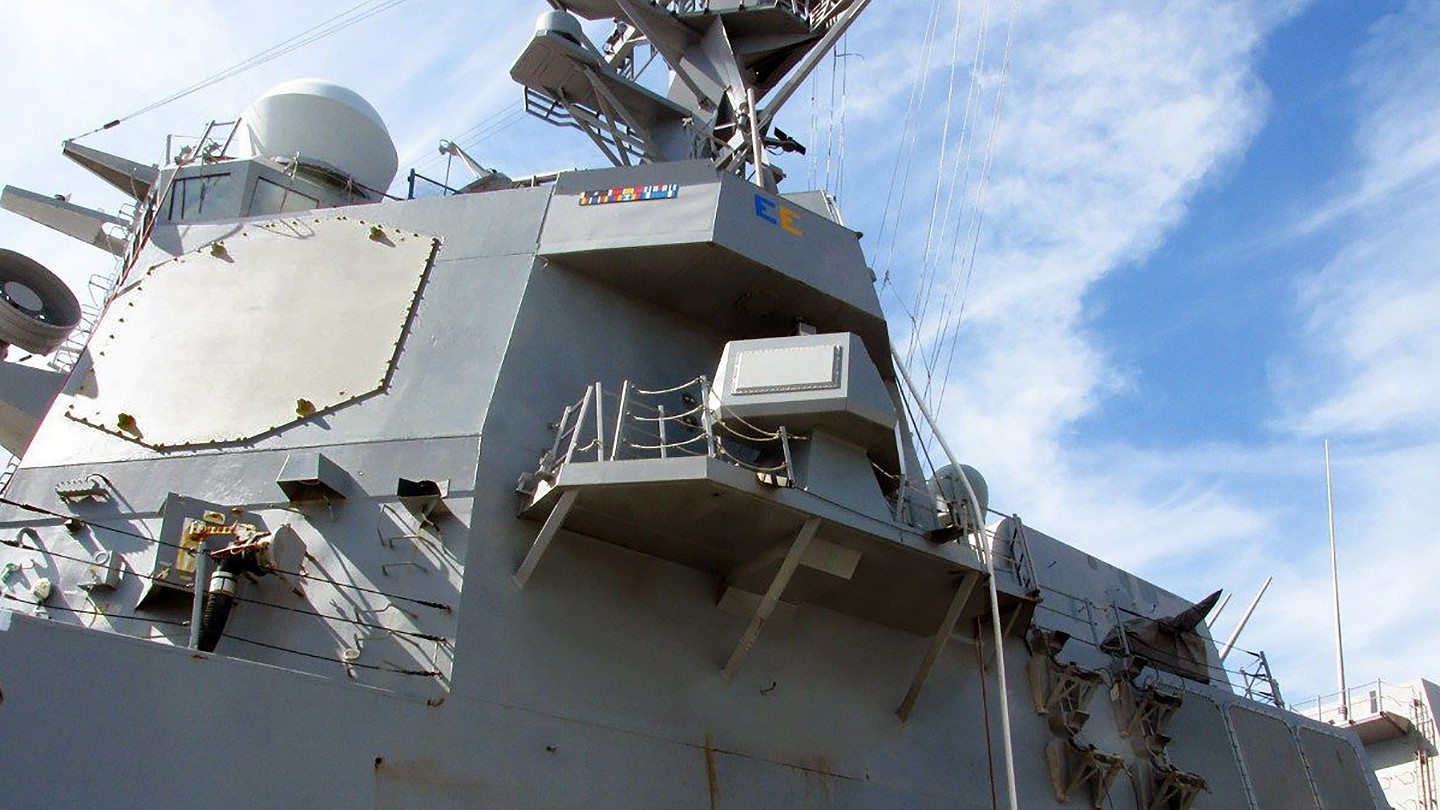
The Navy has made clear that SOEA is in no way a replacement for SEWIP Block III. The goal is for SOEA to itself be scalable and readily upgradable to provide additional flexibility going forward.
What ships might ultimately receive SOEA systems is unknown. It could be an option for any of the vessels in Navy service that already have a version of SEWIP system, which currently includes the USS Gerald R. Ford and Nimitz class aircraft carriers, Ticonderoga class cruisers, Zumwalt and Arleigh Burke class destroyers, and San Antonio class amphibious warfare ships. The service’s future Constellation class frigates will feature SEWIP Block II and there has been talk about adding a “Lite” version of SEWIP Block III to those ships in the past. The U.S. Coast Guard’s Legend class cutters also have a version of SEWIP.
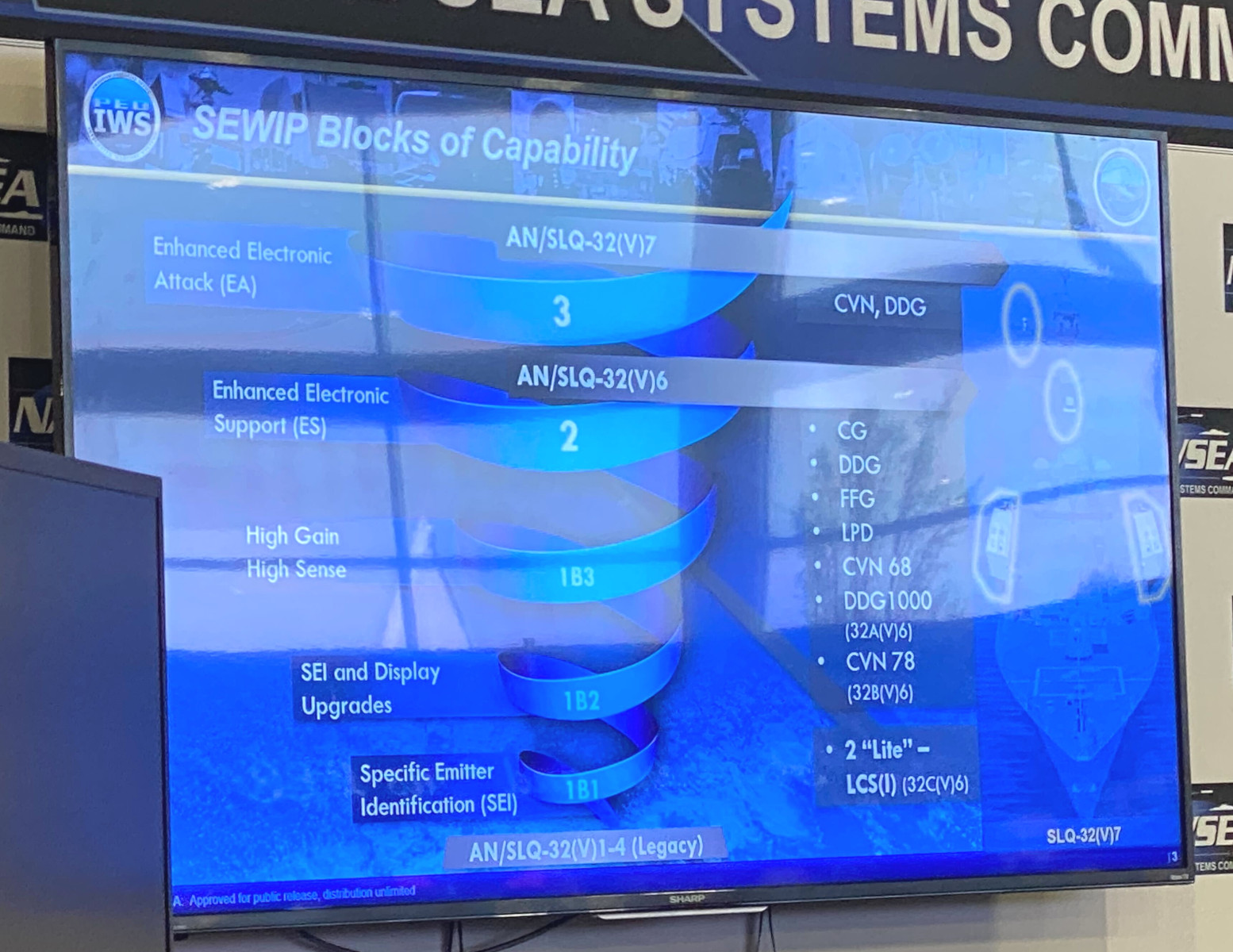
Depending on exactly how scalable the system is, SOEA could be added to even more ships down the line. The introduction of this system is also fully in line with the Navy’s efforts to create a broader, distributed electronic warfare ecosystem that includes various nodes, and not just on ships, which could be directly networked together. Various tiers of expendable decoys are another important component of this vision.
SOEA could offer a relatively quick way to further increase the total number of platforms contributing to this collaborative electronic warfare network across the naval battlespace. Just having a readily available way to add even a limited level of electronic attack capability individual to various kinds of Navy warships will be a boon, too.
The Navy is looking at a future full of an increasingly diverse array of threats, especially when it comes to missiles and drones. Current operations against Iranian-backed Houthi militants in and around the Red Sea have only rammed home the very real threats that anti-ship ballistic and cruise missiles, as well as kamikaze drones, pose in the maritime domain. Crews on Navy ships could expect to see larger volumes of more advanced missiles and drones headed their way in any potential future high-end conflict, especially one against China in the Pacific.
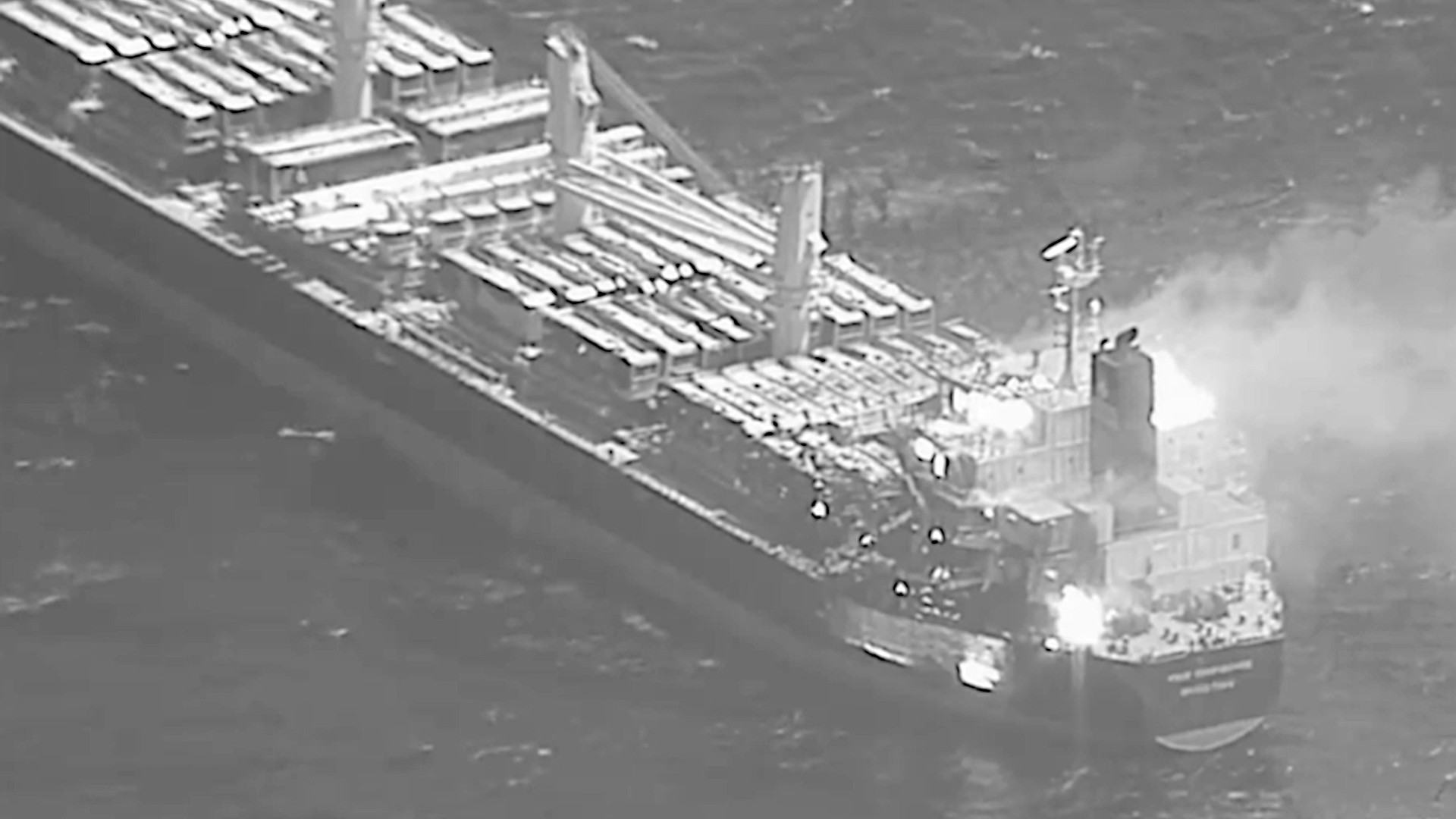
Even before the crisis in and around the Red Sea erupted, the Navy had been exploring ways to quickly add additional layers of protection to its ships in response to emerging and proliferating missile threats. The demand for additional defensive capabilities only looks set to keep growing as state and non-state actors continue to expand their missile, as well as drone capabilities.
If all goes to plan, more ships across the Navy will be able to start getting built-in electronic attack capabilities by 2026 that will be valuable, if not increasingly critical for survival in future operations.
Contact the author:joe@twz.com
